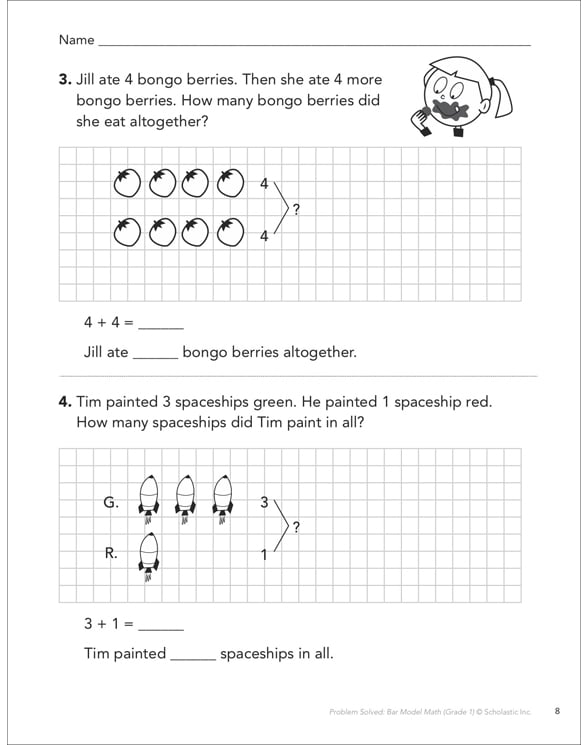
Bar models will not, however, do the calculations for the pupil they simply make it easier for pupils to work out which calculation must be done to solve the problem. The bar model is central to maths mastery, the pictorial stage in the concrete pictorial abstract (CPA) approach to learning. In word problems, bar models help children decide which operations to use or visualise problems. Bar models are most often used to solve number problems with the four operations – addition and subtraction, multiplication and division. What is a bar model? In maths a bar model is a pictorial representation of a problem or concept where bars or boxes are used to represent the known and unknown quantities. Premium teaching resources for your primary school.
PICTORIAL MODEL MATH FREE



For example, even when a pupil has worked out the answer using an abstract method, it is worth asking them to use concrete manipulatives to convince others that they are correct. Instead, teachers should apply a cyclical approach.

Interestingly, in a mastery classroom, there doesn’t have to be a linear progression from concrete to pictorial to abstract. After all, maths lessons aren't about teaching tricks they are about giving pupils the tools to understand the problem in front of them. Not sure what mastery is? Check out this handy introduction.įirstly, CPA is not about getting the answer quickly. Concrete manipulatives are often used to help low-ability students to work through questions, but it is important that teachers also use them to encourage the transition to pictorial and abstract. So, what is it that makes this approach so valuable to the study of maths and particularly to the teaching for mastery? Discover how the concrete, pictorial, abstract (CPA) approach helps pupils to develop a deep understanding of maths as part of mastery learningĬPA may be at the heart of teaching for mathematical mastery, but giving pupils objects and drawings to help them to understand key concepts isn’t anything new.


 0 kommentar(er)
0 kommentar(er)
